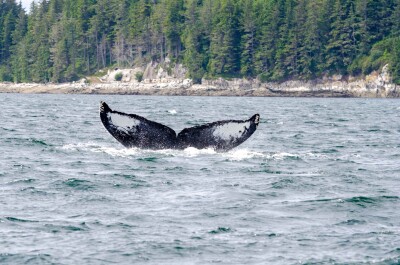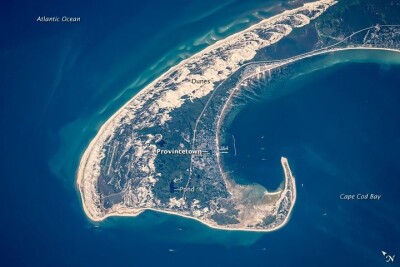Most people — if they know anything about bluefin tuna — know you shouldn't eat it. That's bad news for U.S. fishermen, but one commercial tuna fisherman has some ideas about how to change this.
Bluefin's untouchable status was reinforced this week after the news broke about the $1.76 million tuna that was sold at Tokyo's famous Tsukiji Market. Though called an "auction" the sale was more of a publicity stunt for the winning bidder, who owns a chain of Japanese sushi restaurants.
The publicity stunt worked on more than one level. The numerous news articles about the sale included statements from environmental groups about the fish’s scarcity. The Pew Environment Group released a report from scientists who say that populations of Pacific bluefin tuna have fallen 96.4 percent from unfished levels. According to the release from Pew, “decades of overfishing” are responsible for the losses.
News outlets connected the dots. A report on National Public Radio’s website claimed “this extravagant sale — and the publicity around it — may be just one more way to push demand for this fish, at a time when the species is vulnerable due to overfishing.”
The notion is ludicrous, says David Schalit, a commercial tuna fisherman from New York. I found David after he posted a comment on the New York Times’ Dot Earth blog to help clarify the confusion.
In his comment, David provided a link to NOAA’s SAFE Report of ex-vessel prices, which shows that U.S. fishermen were paid $10.21 per pound on average in 2011 — not $2,000 a pound. As he says, U.S. scallop fishermen are regularly paid more for their catch.
“There are many problems that come out of the media frenzy over this single expensive fish sold in Tokyo each year, but the core issue is the notion that there is a connection between the exorbitant price paid for this fish and the alleged overfishing of bluefin,” he wrote to me in an email after I contacted him about it.
David told me he has been fishing for bluefin out of New England for about 5 years, mostly from Scituate Mass. Prior to then, he was in the commercial tropical tunas fishery (yellowfin, bigeye and albacore tuna) in the eastern canyons, fishing out of Long Island, N.Y., for decades.
“I would also like to add that I know of no U.S. bluefin fisherman who has a Porsche sitting in his driveway,” he wrote.
Bluefin’s status as a worldwide fishery means that the good gets lumped in with the bad, which he points out is damaging to U.S. bluefin fishermen, who are in a highly regulated artisanal fishery, catching below the quota set each year by ICCAT. (In 2011 NOAA concluded that Atlantic bluefin was not endangered after being petitioned to declare it so by the Center for Biological Diversity.)
That’s a story that’s rarely told, which hurts public policy and markets for U.S. fishermen:
“At least 50 percent of our bluefin are flown fresh to Japan to be auctioned at Tsukiji Market in Tokyo at great expense, and this high cost of airfreight is deducted from auction revenues and therefore deducted from what we receive for our catch," wrote David.
“We would like to increase domestic sales of our catch but find it difficult to do so in this environment, which is flooded with negative publicity and incorrect or conflicting information regarding our fishery in particular and Atlantic bluefin in general.”
The news isn’t all bad. David pointed out that Lee Crockett, the director of federal fisheries policy for Pew, has occasionally made conciliatory statements about the U.S. tuna fishery, acknowledging some of the sacrifices made by U.S. fishermen.
David is also going to be reaching out to NOAA for how can it be of help. “There are three important ways,” he says:
NOAA can put the story of the $1.7 million fish in context by explaining ex-vessel pricing of U.S. bluefin in that section of its Fishwatch website.
“Secondly, we must wait another year to do this, but given that we know when the auction of this expensive fish will take place, NOAA, through its public relations department can preemptively issue a press release to all major media outlets just prior to next year’s auction with a similar explanation.
“Finally, NOAA can publicly acknowledge the artisanal status of the U.S. commercial bluefin fishery. This will go a long way toward helping the fishermen in the domestic market.”
It's a good plan, and I hope NOAA follows it. In the meantime, among this sea of confusion, I need to give credit to one journalist who wrote an unbiased, informational story about bluefin that was also published this week.
In Enigma on rice, James Wright, my colleague at Seafood Business magazine (I work on both Seafood Business and National Fisherman) talks to people in the industry to go beyond public perceptions to find out the real story about this magnificent fish.
If you’re interested in learning more about what's going on with bluefin, check out his story.
NOAA Fisheries photo







